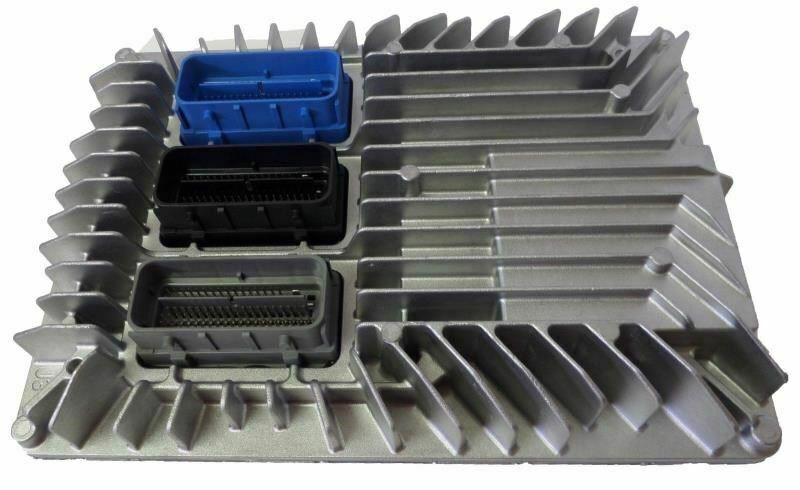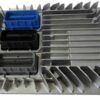Is Your Buick Verano Experiencing Frustrating Engine Problems?
As a technician with over two decades of diagnostic experience, I’ve seen firsthand how a failing Engine Control Module (ECM) can turn a reliable car into a source of constant worry. If your 2017 Verano is suffering from a persistent check engine light, rough idling, stalling, or a sudden drop in fuel economy, the culprit is very likely the vehicle’s computer. This isn’t just an inconvenience; it’s a critical failure that compromises your car’s performance and safety. You need a solution that is both reliable and straightforward, and that’s exactly what this part provides.
This is a direct-fit replacement Engine Control Module for your GM vehicle, part number 12667189. The most significant benefit we offer is our professional programming service. Before this module ships, we will flash it with the latest, most stable software from General Motors, specifically matched to your vehicle using its unique VIN. This eliminates the need for an expensive trip to the dealership or specialized tools, making this a true plug-and-play solution for both seasoned mechanics and determined DIYers. Restore your engine’s precision and efficiency with a component you can trust.
From the Diagnostic Bay: The Ghost in the Machine
I remember a 2017 Impala that came into the shop with a laundry list of intermittent complaints: random stalling at red lights, occasional hard starting, and a flickering check engine light with no consistent codes. The owner had already replaced the battery and spark plugs with no luck. After hooking up my advanced scanner and monitoring live data, I noticed erratic voltage readings from the throttle position sensor, but only sporadically. The wiring checked out perfectly. This pointed me directly to the ECM. The internal logic circuits were failing, sending faulty signals and creating these “ghost” issues. We installed a VIN-programmed ECM, and the car ran perfectly. It’s a classic example of how a failing 2017 Verano ECM or similar GM module can cause symptoms that seem unrelated at first glance.
Key Symptoms of a Failing Engine Computer
A faulty ECM can manifest in numerous ways. If you’re noticing any of the following issues, it’s a strong indicator that your engine’s computer may need replacement. Look out for these common signs:
- ✔ Check Engine Light is illuminated, often with internal processor codes like P0601, P0606, or U0100.
- ✔ The engine cranks but refuses to start.
- ✔ Unexplained drops in fuel mileage and poor engine performance.
- ✔ Stalling, stumbling, or hesitation during acceleration.
- ✔ Rough or inconsistent idling.
- ✔ Automatic transmission shifting issues or harsh engagement.
- ✔ Communication problems with diagnostic scan tools.
A Straightforward Guide to Installation
Replacing the ECM on most compatible models is a manageable job that can be done with basic hand tools. Our pre-programming service handles the most complex part for you. Here’s a general process to get you started:
- Safety First: Always disconnect the negative terminal from your vehicle’s battery and wait at least 15 minutes to allow all systems to discharge.
- Locate the ECM: On many of these vehicles (like the Equinox, Terrain, and Regal), the ECM is found in the engine compartment on the driver’s side. On others (like the Traverse and Acadia), it’s located behind the fan shroud. Consult a service manual for your specific model if you’re unsure.
- Disconnect the Connectors: Carefully unlatch and remove the wiring harness connectors from the old module. Inspect them for any corrosion or damage.
- Remove the Old Module: Unbolt the old ECM from its mounting bracket and remove it from the vehicle.
- Install the New ECM: Mount your new, pre-programmed module in place and secure the bolts. Reconnect the wiring harnesses, ensuring they click securely into place.
- Reconnect the Battery: Reattach the negative battery terminal. Your vehicle may need to complete a security relearn procedure or idle relearn, which typically involves letting the engine run for a few minutes. Check your owner’s manual for specifics.
Verified Vehicle Compatibility
This module is a direct replacement for part numbers 12667002, 12666070, and 12667189. It is guaranteed to fit the following GM vehicles:
- ✔ 2017 Buick Enclave (behind fan shroud)
- ✔ 2017 Buick LaCrosse
- ✔ 2017 Buick Regal (LH engine compartment)
- ✔ 2017 Buick Verano
- ✔ 2017 Cadillac XTS (3.6L, VIN 3, opt LFX)
- ✔ 2017 Chevrolet Caprice (3.6L)
- ✔ 2017 Chevrolet Equinox (LH engine compartment)
- ✔ 2017-2019 Chevrolet Impala
- ✔ 2017 Chevrolet Traverse (behind fan shroud)
- ✔ 2017 GMC Acadia (VIN J, Limited, behind fan shroud)
- ✔ 2017 GMC Terrain (LH engine compartment)
Frequently Asked Questions
What is an ECM?
The Engine Control Module (ECM), also known as the powertrain control module (PCM), is the central computer that manages your vehicle’s engine. It controls critical functions like fuel injection, ignition timing, and emissions systems to ensure optimal performance and efficiency.
Is this module truly ready to install?
Yes. We program the module with the latest GM software using the Vehicle Identification Number (VIN) you provide. This means it’s ready for installation right out of the box, with no additional programming required.
How do I give you my VIN?
After completing your purchase, you will need to send us your 17-digit VIN. You can typically add it as a note during checkout or send it to us in a message referencing your order number. We cannot ship the part until we receive your VIN.
Will this fix my check engine light?
If the check engine light is caused by an internal failure of the original ECM (e.g., codes P0601-P0606), then this replacement part is the correct fix. However, it’s always best to have the codes professionally diagnosed to ensure the ECM is the root cause.
Do I need to perform a security relearn procedure after installation?
On many GM vehicles, a simple security relearn is required. This can often be done without special tools by cycling the ignition key. We include general instructions, but you should also consult your vehicle’s service manual for the exact procedure.



